
Eben Weiss writes the Bike Snob NYC blog and is the author of Bike Snob, The Enlightened Cyclist, and Bike Snob Abroad (Chronicle Books).
We’re currently in the throes of Bike to Work Week, which culminates in Bike to Work Day on Friday, after which your sweaty coworkers can breathe a sigh of relief and reach for their Hyundai keys like smokers for their lighters.
You don’t have to tell cyclists it’s Bike to Work Week. There have been clues:
I know what you’re thinking: “Typical elitist bikers in their form-fitting stretchy shorts, looking down at anyone else who dares straddle a bicycle.” Hardly.
If anything, cyclists are cynical about Bike to Work Week because we want bicycle commuting to be more inclusive. We don’t want it to be something people do once a year out of a sense of obligation, like paying your taxes or calling grandma on Mother’s Day. We want people to discover the joy and practicality of cycling, and for riding a bicycle to become a default mode of transport for lots and lots of people in cities and towns all over America.
This is why some of us suspect that encouraging a bunch of inexperienced riders to take to the streets simultaneously during the most pleasant month of the year is not necessarily the best way to promote cycling.
I’m not saying Bike to Work participants are in serious danger. If anything, Americans tend to greatly exaggerate the dangers of cycling. In 2012, there were more than 700 cyclist fatalities, compared to more than 30,000 motor vehicle deaths. We need that false sense of security we get from our SUVs. Our entire way of life depends on it.
No, it’s just that in much of America, spring is when all the fair-weather cyclists emerge from their hidey-holes after cowering inside all winter. This means that before Bike to Work Week even begins, the bike paths and greenways are already clogged with overzealous, wobbly-legged cyclists splayed out over their aerobars like baby giraffes. In order for cycling to “take,” it’s most important that these Bike to Work Week commuters enjoy themselves, and injecting them into this frothy mix of wonky speed weenies is a recipe for frustration.
The other problem is that while one or two new riders might experience a revelation during Bike to Work Week and keep going, for most people five days is not nearly enough time to come to grips with the idea of bicycle commuting.
Does this mean riding a bike is some rarefied skill it takes years to master? Absolutely not. Anybody can do it! This is why about 40% of people in Amsterdam commute by bicycle, and they’re no better than we are—well, apart from the fact that the Dutch obesity rate is less than half what ours is. However, that’s probably because they ride bikes to get places, so once we finally start riding ours, too, they better watch out for Number One. USA! USA!
Still, you simply can’t expect a climate-controlled populace that has been coddled by the car to take to the bicycle during the span of a single week. It takes at least that long just to figure out how to get to work by bike, and then another week to figure out how to do it without getting a big sweat stain on your back. (Hint: Don’t carry your bag on your body; use one that attaches to your bicycle.) Then you need to acquire the street smarts that only comes from having four or five bikes stolen.
Alas, if anything, the greatest hope we cyclists have for Bike to Work Week is that it might make a few people into more considerate drivers. Sure, most of these riders will probably return to their cars next week anyway, but perhaps some of them will do so with a little empathy and a better understanding of their own behavior behind the wheel. Maybe next time they’re approaching an intersection, they’ll let the cyclist go through first instead of gunning it past and then turning right into the rider’s path.
Hey, we can dream.
Portland, Ore.

Clarke from the League of American Bicyclists praises the city with the highest percentage of bike commuters among the largest 70 U.S. cities (almost 6%) for painting bike lanes green and “reorganizing intersections” over the years to make it safe for bikers to get onto key bridges that span the Willamette River. On the Hawthorne Bridge, for example, sidewalks were made wider to accommodate bike lanes, while a running “Bicycle Counter” helps the city monitor bike traffic so it can make improvements. Sayler from the Adventure Cycling Association also points out that apartment buildings promote bike parking spots to attract residents, while local businesses do the same to draw in customers.
Washington, D.C.

The first jurisdiction in North America to start a bike-sharing program boasts the second largest percentage of bike commuters (4.5%) among the largest 70 U.S. cities and stands out because it has made bikes easily available and installed a protected bike lane along Pennsylvania Avenue, between the White House and the Capitol, said Clarke, from the League of American Bicyclists. In fact, Capital Bikeshare station docks or corrals for returning bikes have been getting so full in downtown D.C. in the mornings that, starting this week, riders will be able to hand their bikes to attendants rather than walk until they see an open dock.
San Francisco

The Bay Area stands out for the way its mass transit system accommodates bicyclists, argues Sayer from the Adventure Cycling Association. Bikes are allowed on BART trains, stations have bike racks and lockers, and the Caltrain has bike cars.
Minneapolis
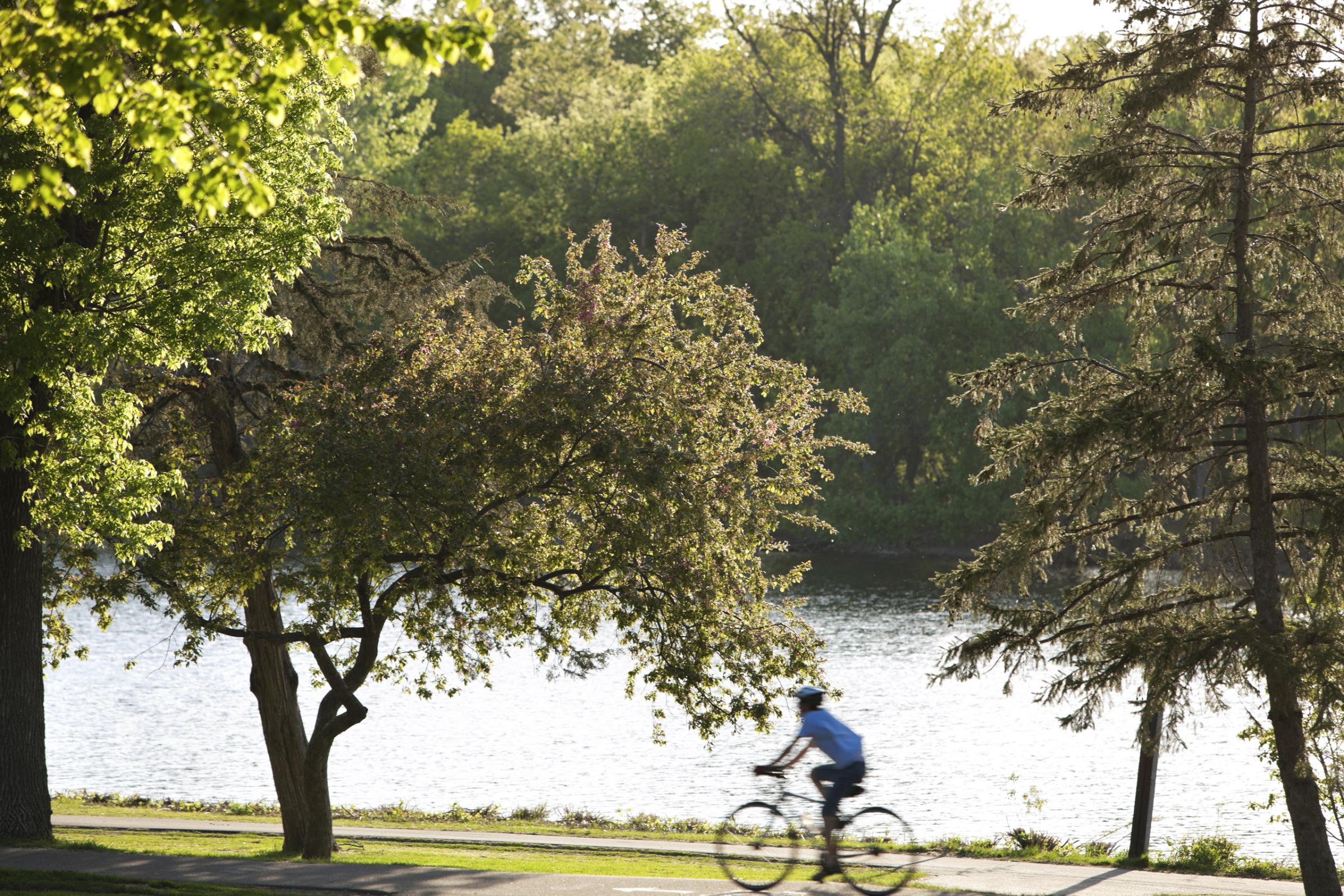
The city has “great bike paths and bike lanes that are well-marked, interconnected, and scenic,” said Blumenthal from PeopleForBikes. “One of the great ways to commute by bike in the country” is the Midtown Greenway, a former rail line that was converted into a bike path with multiple entry points and runs through the heart of the city.
Philadelphia

Its bike-share program just launched in April 2015, but already it is being touted as the most egalitarian one in the country because it does not require a credit or debit card to purchase a membership. “It’s serving all neighborhoods, not just the most affluent ones, making bike riding more available to people without a lot of resources,” said Blumenthal from PeopleForBikes.
Davis, Calif.
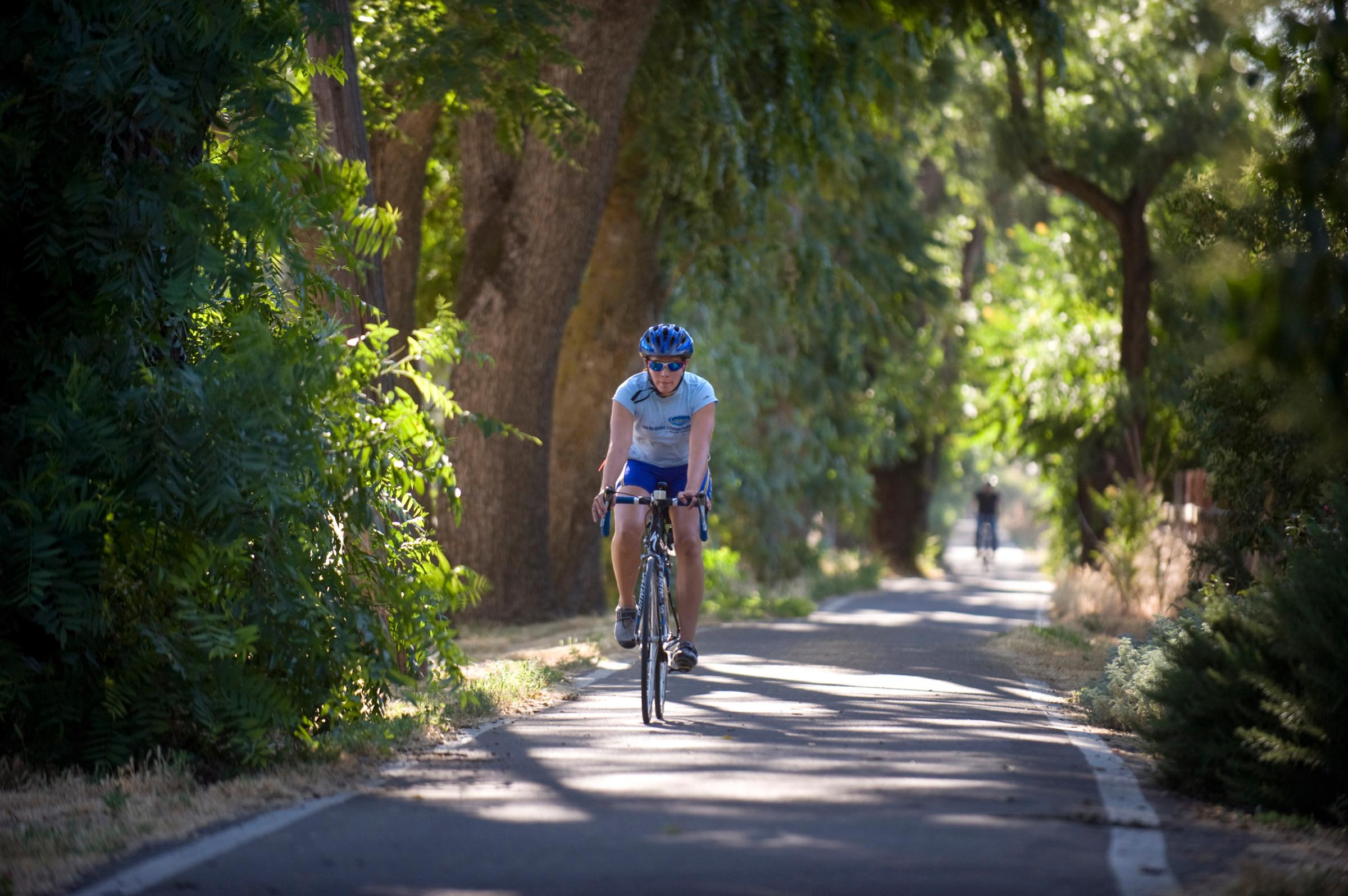
At 24.5%, the Northern California city boasts the highest percentage of residents biking to work in the country and is famous for pioneering bike lanes, which were initially implemented as an experiment in 1967. Today, the home of the United States Bicycling Hall of Fame maintains 100 miles of bike lanes and paths, and at the University of California, Davis, cars and university buses come to a halt on campus at the top of the hour to make way for all of the students and faculty members who bike to and from classes.
Boulder, Colo.
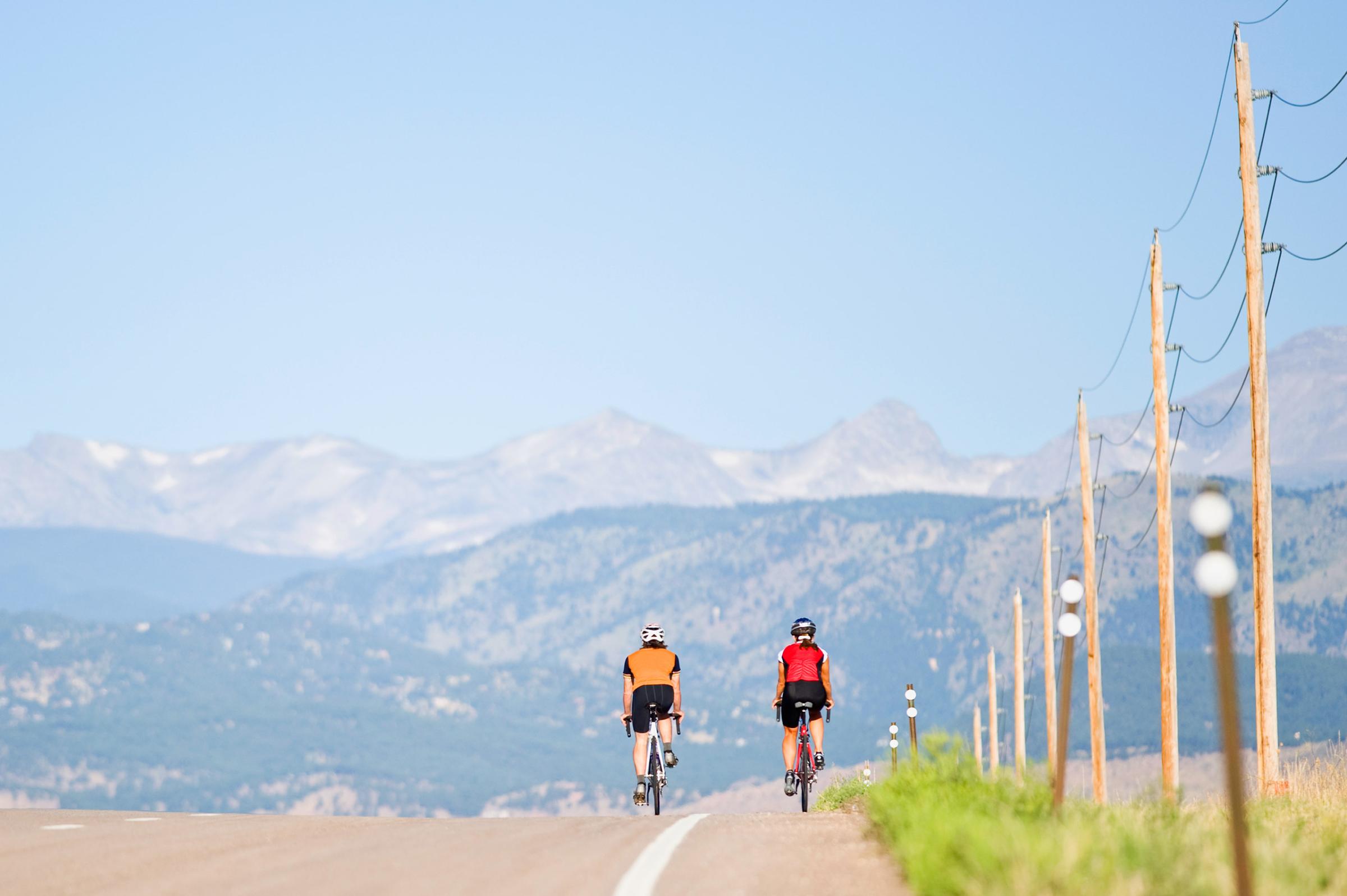
There are bike lanes with concrete curbs and 75 underpasses ideal for bikers nervous about riding next to cars. As part of a transportation policy adopted in 1989, “the city has constructed an average of one mile of off-street paths, half a mile of on-street bicycle lanes, and two underpasses each year,” according to Boulder’s website.
Seattle
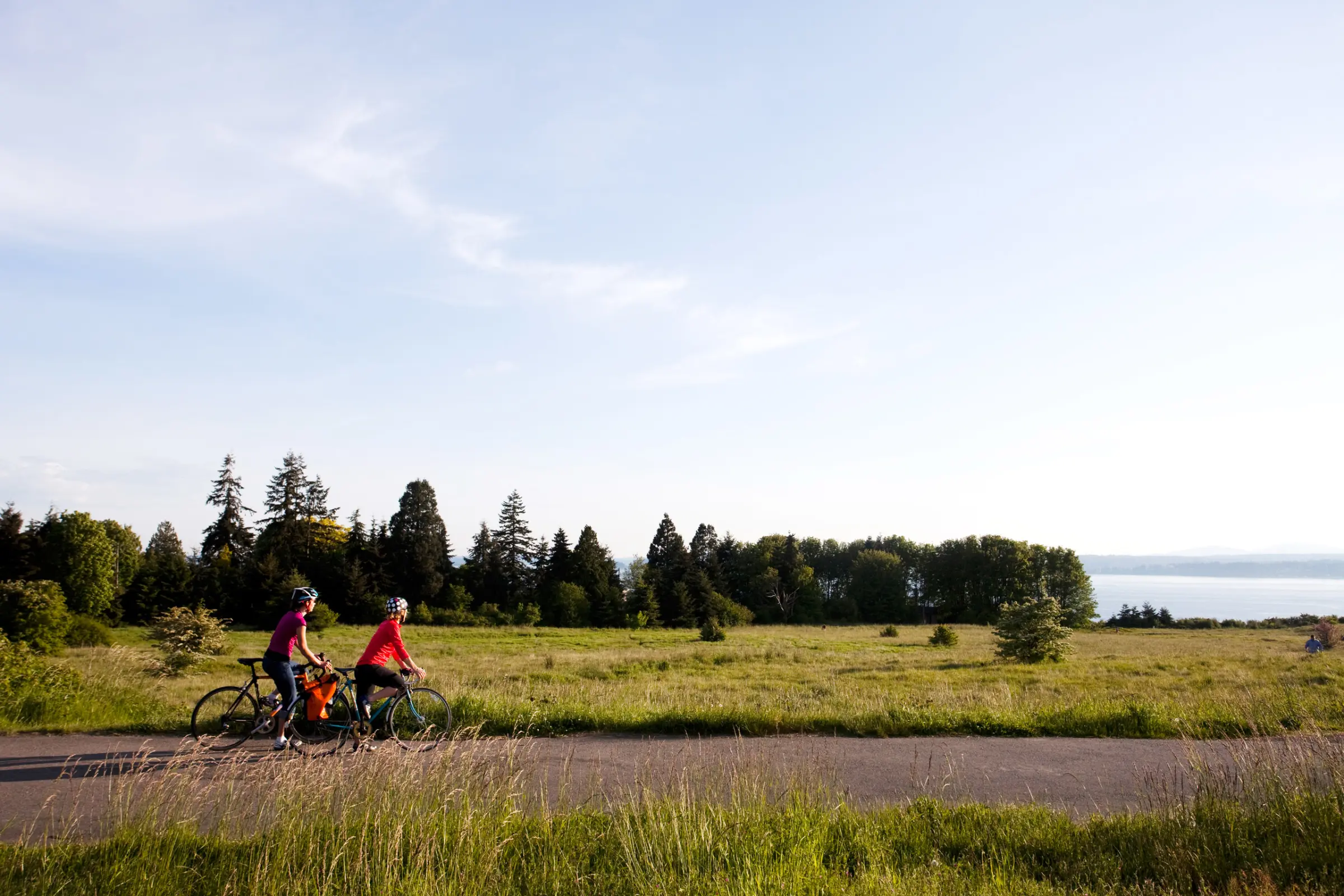
In addition to offering a bike-sharing program, Seattle also recently installed a bicycle lane on Second Avenue designated by plastic posts. These efforts, and others like harsher penalties for motorists who hit bicyclists, are said to be a result of tireless lobbying by the Seattle-based nonprofit Cascade Bicycle Club, one of the largest bicycle clubs. The club has about 16,000 members and organizes the Pacific Northwest’s top bicycling events.
Chicago
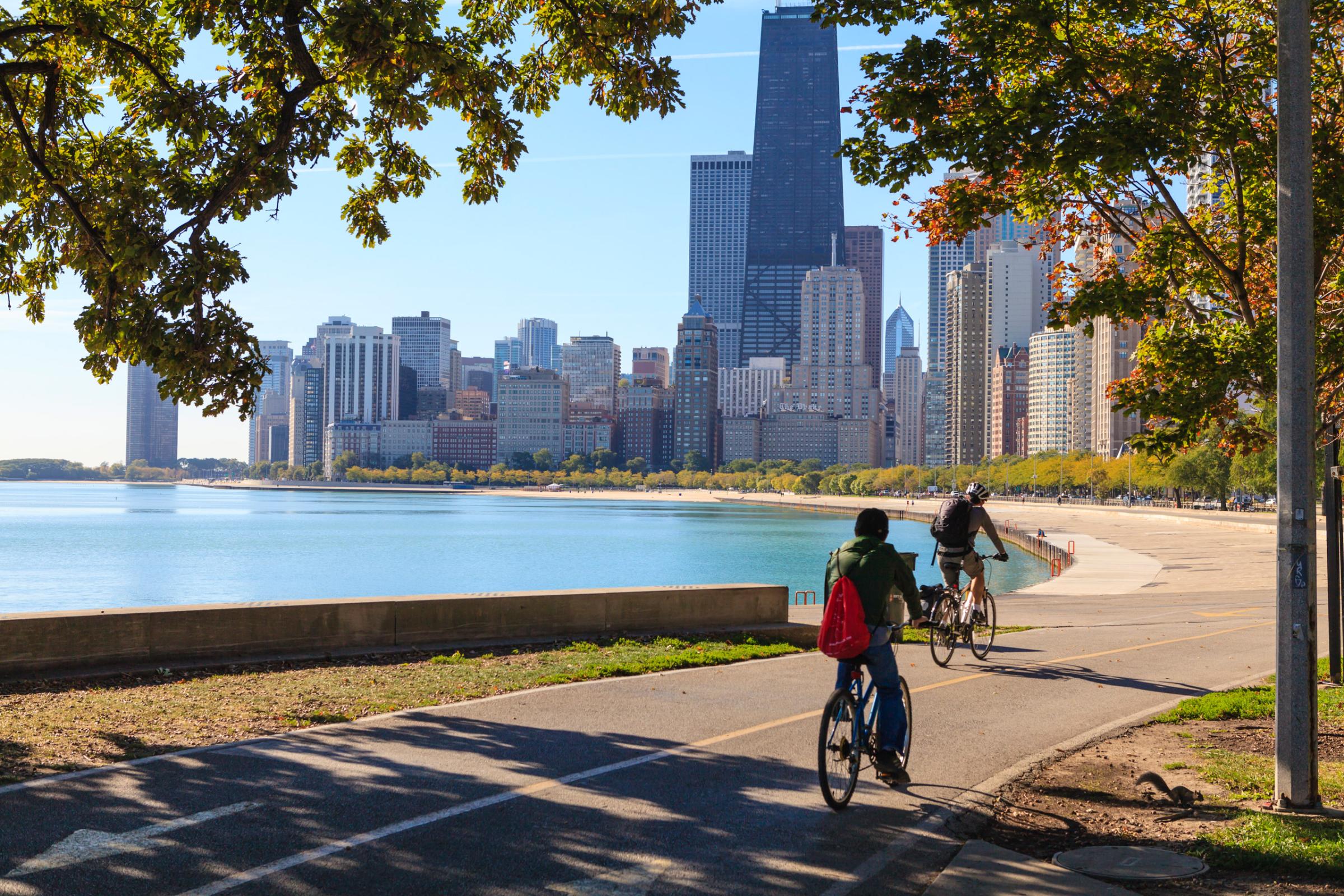
Because of Mayor Rahm Emanuel’s pledge to provide “a bicycle accommodation within [a] half-mile of every Chicagoan” by 2020, there are already 200 miles of “on-street, protected, buffered and shared bike lanes,” even in the toughest areas to bike, like the center of the city.
More Must-Reads from TIME
- Cybersecurity Experts Are Sounding the Alarm on DOGE
- Meet the 2025 Women of the Year
- The Harsh Truth About Disability Inclusion
- Why Do More Young Adults Have Cancer?
- Colman Domingo Leads With Radical Love
- How to Get Better at Doing Things Alone
- Michelle Zauner Stares Down the Darkness
Contact us at letters@time.com